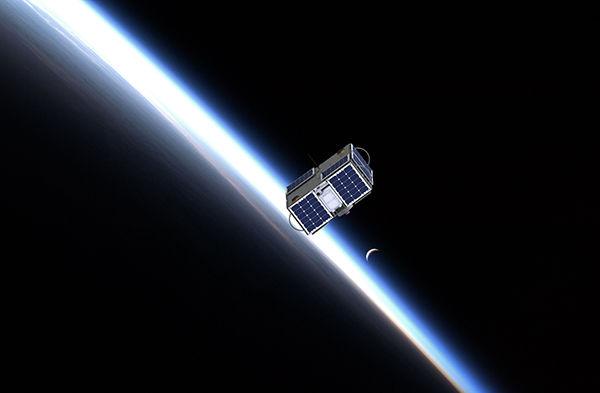AggieSat Lab takes A&M one step closer to space with its development of AggieSat4, a small satellite slotted to be submitted Feb. 22 to NASA for acceptance testing.
Helen Reed, faculty advisor for AggieSat Lab and aerospace engineering professor, said AggieSat4 is designed to interact with a satellite in development at the University of Texas at Austin.
“What we are doing there is trying to come up with technologies for small satellites that will enable systems of the future to go up and be able to rendezvous and operate around each other, cooperate together, rendezvous and dock,” Reed said.
Andrew Tucker, aerospace engineering graduate student and AggieSat4 graduate manager, said AggieSat Lab is a student organization focused on providing students with real-world engineering experience.
“AggieSat is a student organization, primarily engineering focused, to design, build and fly satellites,” Tucker said. “Basically it’s Dr. Reed’s extracurricular teaching opportunity she uses as a platform to give students a chance to work on a real project in a real-world situation so that you have actual firsthand engineering knowledge coming out of school rather than it all just being pencil and paper.”
Tucker said AggieSat Lab is in the final stages of development for AggieSat4. The organization must deliver the satellite to NASA by Feb. 22, where it will undergo further testing to ensure it is ready for space flight. Tucker said the testing will include vibrations that simulate rocket launch and vacuum testing that simulates the space environment.
If it passes NASA’s acceptance testing, AggieSat4 will go up to the International Space Station on a SpaceX vehicle, or something similar. Once there, about 240 miles above the Earth’s surface, astronauts will place the satellite in its proper orbit.
AggieSat4 is the latest in a long line of projects undertaken by AggieSat Lab. The lab’s most recent project, AggieSat2, launched in 2009, was designed to gather information and test technology in preparation for the AggieSat4 mission. Its orbit has since decayed. AggieSat Lab has had two additional satellites in orbit and has worked on many others.
Tucker said despite being so close to the deadline there is a great deal left to do.
“A lot of it is made already, but once you make it, you need to make sure it works, flawlessly,” Tucker said. “Then you have to do special precautions to make sure it’s prepared for space, some things don’t behave well in a vacuum so you have to put an epoxy over them, a protective. You have to check to make sure it works after that, flawlessly again.”
Andrew Shell, history senior and project manager of AggieSat4, said it’s a good feeling to be so close to completion.
“It’s an interesting feeling, sometimes you feel like it’s never going to get finished and then when you go and see hardware going into the bus, that makes you feel good,” Shell said. “It’s been a long road to get here.”
Reed said communication is essential for AggieSat Lab. The student teams must work together to make sure the satellite’s various components all work together in space, where maintenance is impossible. The students also work with NASA on a weekly basis.
“They have to report their progress to NASA every week on the telecom, they have organized reviews where they actually have to travel to Johnson Space Center to present in front of a typical board that a company would have to present in front of, because they are actually launching their satellite into space,” Reed said.
Reed said AggieSat students organize themselves and work when they are able.
“The students will coordinate their schedules with each other as to when they are able to come in and work on the project during the week,” Reed said. “Saturdays, all of the students are typically here working on the project.”
AggieSat Lab provides a unique undergraduate experience, Shell said.
“In sort of very concrete terms, it looks really good to put on your resume if you are going to go look for an engineering job,” Shell said. “You get to tell an employer, ‘Hey, I’ve actually done real engineering jobs already that you didn’t have to pay for.’ Just the satisfaction of working on a real space flight project as an undergraduate student. This thing is actually going to go on a rocket and go into space. And I’m not aware of any other place on campus where an undergraduate can do that.”
Shell said AggieSat Lab is open to anyone who wants to learn.
“If an underwater basket weaving major walked through the front door and said, ‘Hey, I want to help build a spacecraft,’ I would say, ‘Great, here is a soldering training manual, here is a C++ book, just read up and have fun,’” Shell said. “Basically, the only thing you need to succeed here is a good work ethic and a willingness to work.”
Space: the Aggie frontier
December 2, 2014

PROVIDED
Donate to The Battalion
Your donation will support the student journalists of Texas A&M University - College Station. Your contribution will allow us to purchase equipment and cover our annual website hosting costs.






















